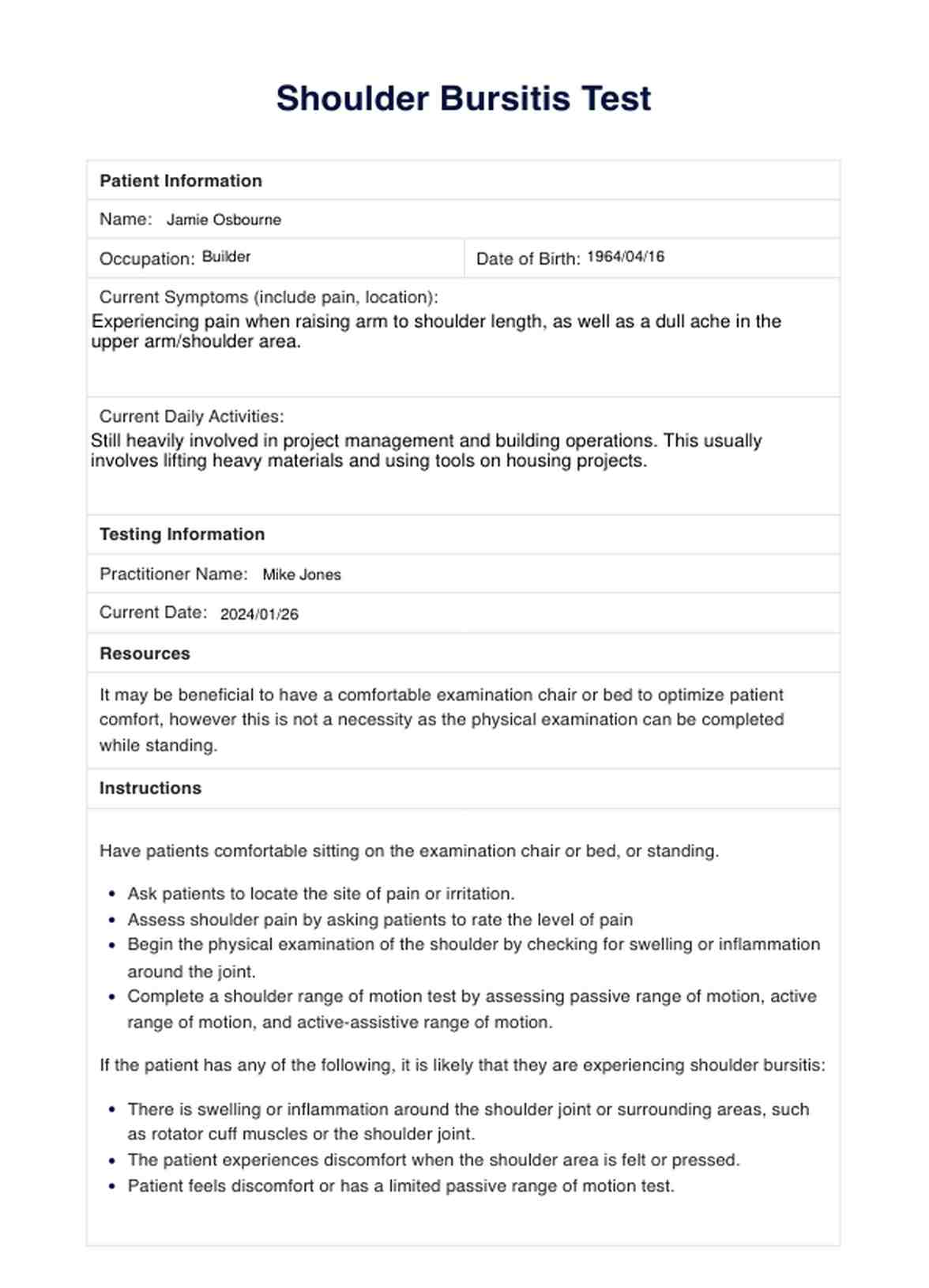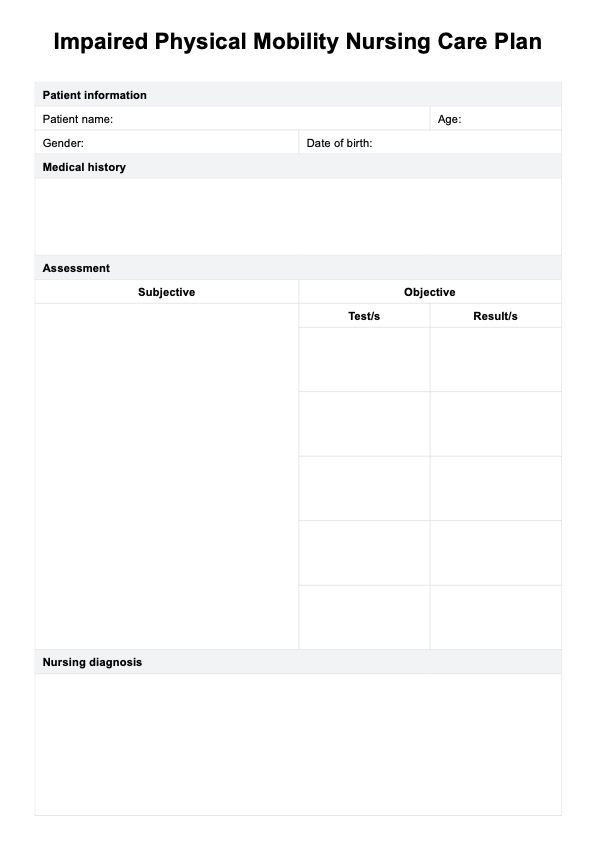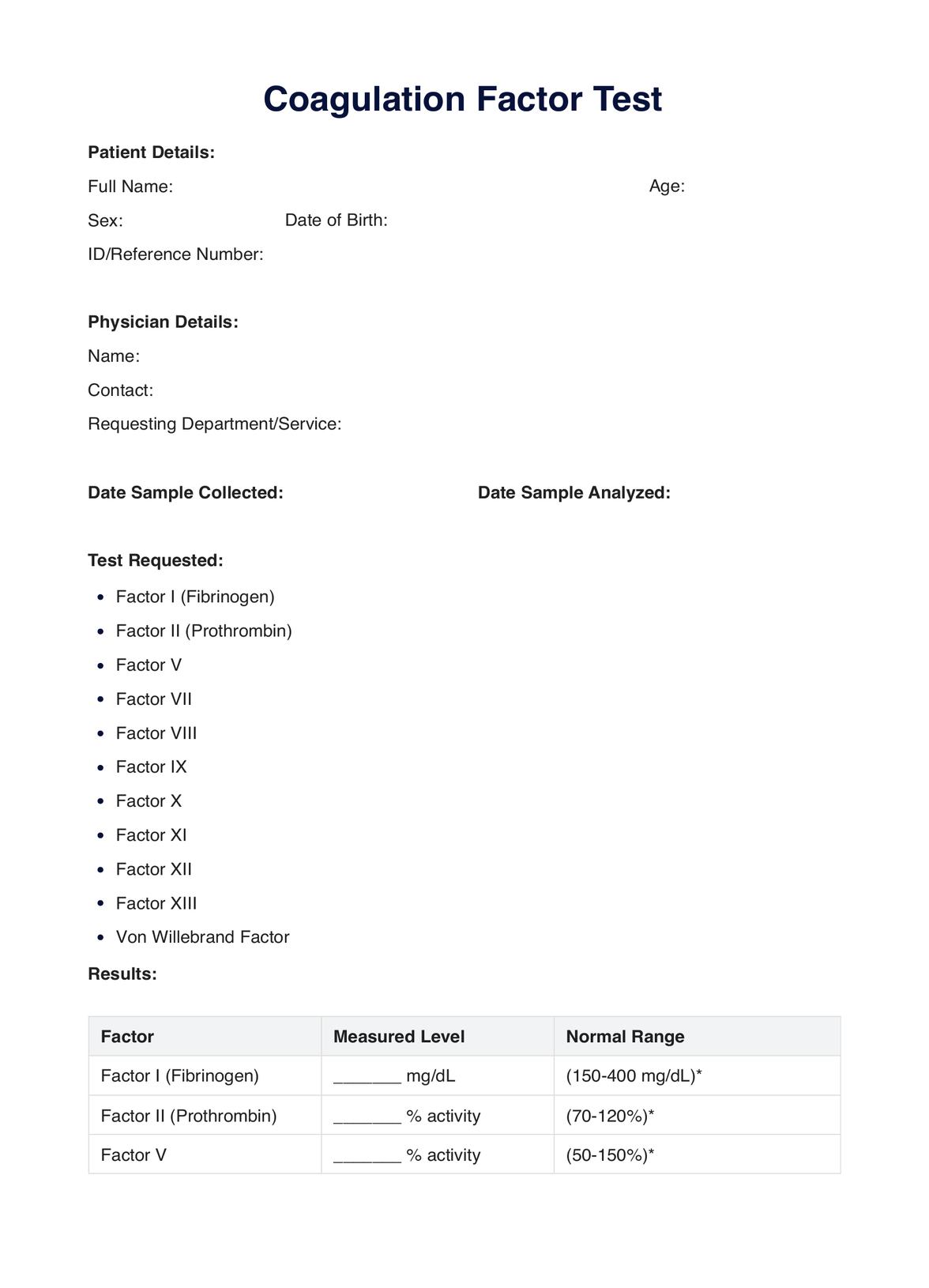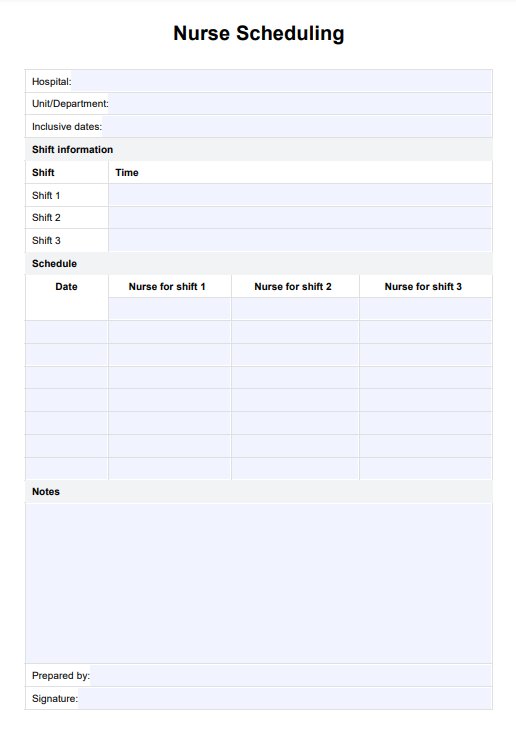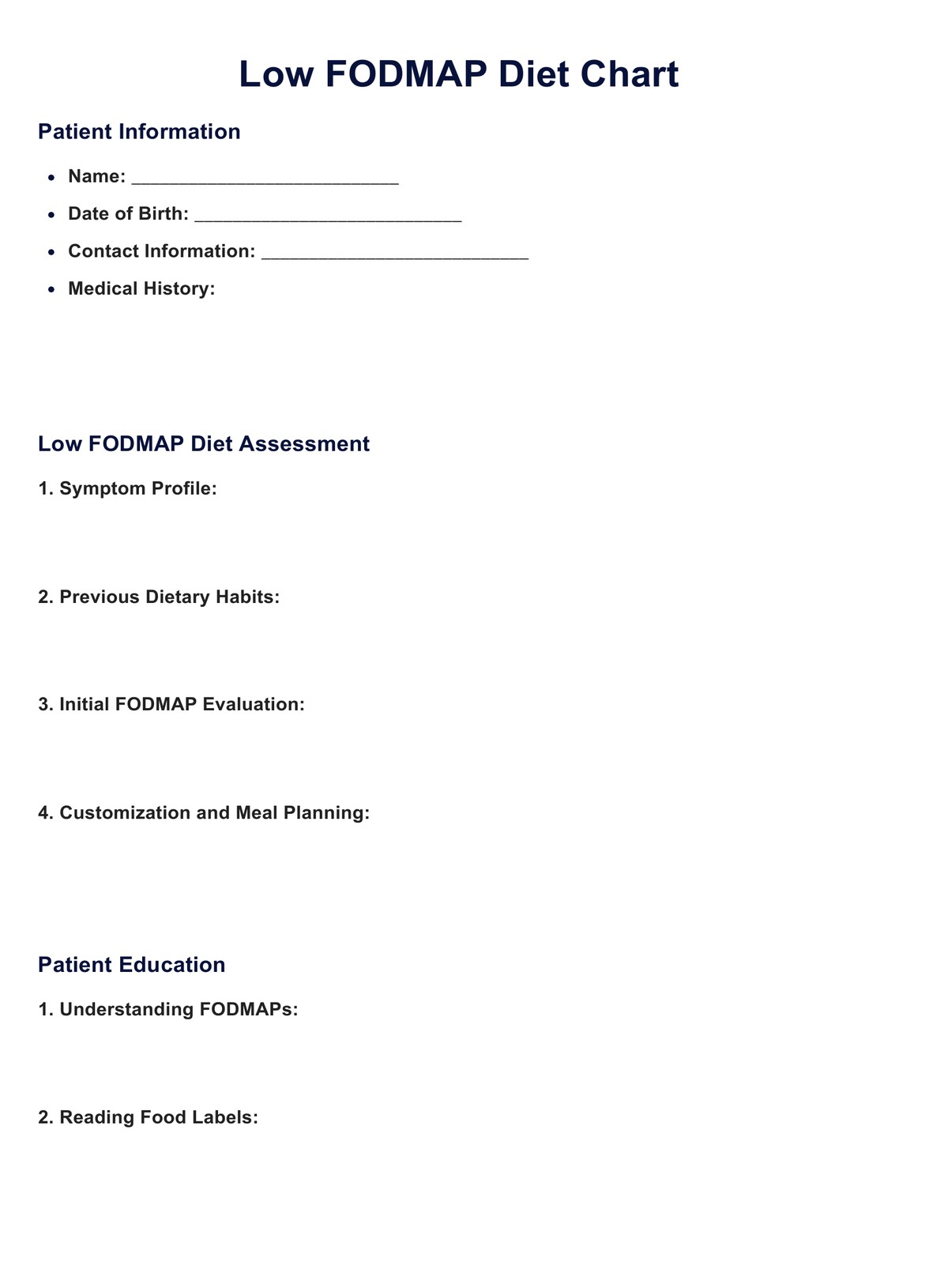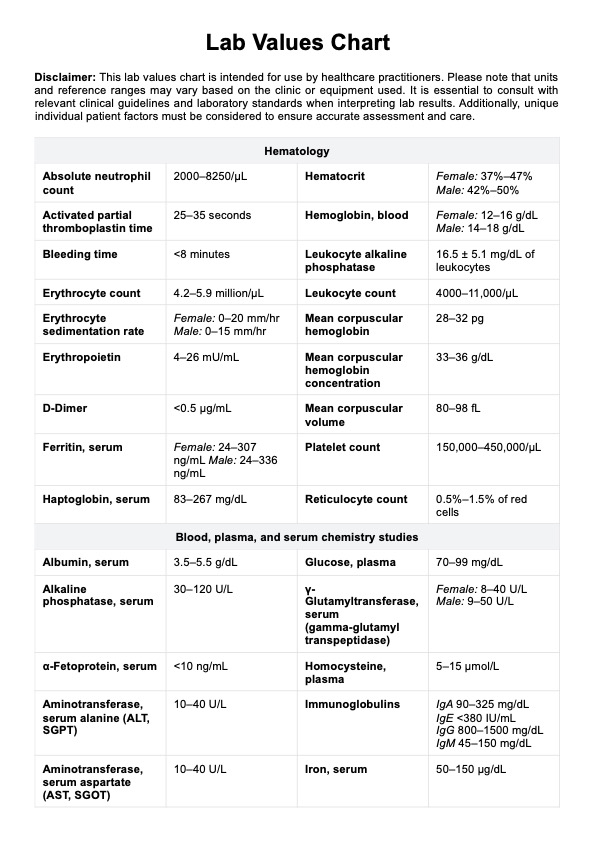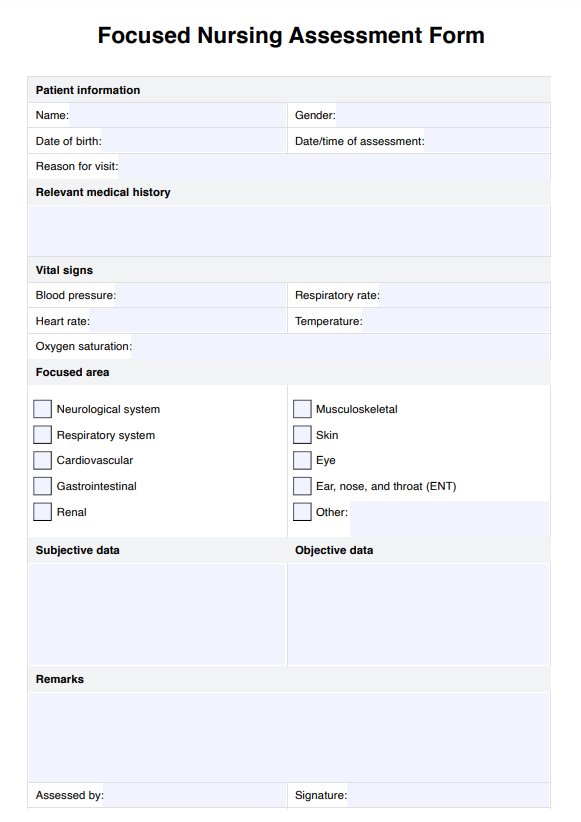Shoulder Bursitis Test
Experiencing inflammation and pain in the shoulder area? Learn about the Shoulder Bursitis Test and receive a free template and example!


What is a Shoulder Bursitis Test?
As one of the leading contributors to shoulder pain, shoulder bursitis is experienced commonly and often accompanied by other shoulder problems like tendonitis. This type of injury typically occurs when the sacs surrounding the shoulder joint (shoulder bursae), which reduce friction and support movement, become inflamed. When there is bursal inflammation, fluid builds up, resulting in pain and swelling felt through the shoulder.
Shoulder bursitis can manifest in several ways and be experienced differently depending on individual factors such as pain tolerance, range of motion, and activities of daily living. Although symptoms commonly reside in pain around the shoulder area, some individuals may experience a dull ache, while others experience severe pain. This can make diagnosing shoulder bursitis challenging for healthcare professionals.
The shoulder bursitis test procedure was developed to assist in the diagnosis of shoulder bursitis. This procedure includes a physical examination to assess the individual's range of motion and inflammation, followed by a diagnostic screen. Depending on the results from the physical exam and the preferences of your clientele and practice, diagnostics may be completed by x-ray, magnetic resonance imaging (MRI), ultrasound, or through joint aspiration.
We at Carepatron have developed the shoulder bursitis test template to support healthcare professionals involved in diagnosing shoulder bursitis. The template serves as a resource to inform effective testing procedures while also being a form of clinical documentation essential to best practice and optimizing patient care. This is an invaluable resource for health professionals seeking to support clients experiencing shoulder pain.
Shoulder Bursitis Test Template
Shoulder Bursitis Test Example
Causes and symptoms of bursitis
Shoulder bursitis is an injury that can manifest according to several factors. It can be experienced by anyone participating in activities that injure or result in repetitive irritation of the bursa surrounding the joint. Common causes of bursal irritation and chronic bursitis symptoms include the following:
- Chronic pain or illnesses: Individuals experiencing chronic illnesses such as rheumatoid arthritis, diabetes, or kidney disease may be at a greater risk for developing bursitis.
- Overuse of the shoulder joint: When individuals perform repetitive actions involving the shoulder or overuse areas supporting the joint, like the rotator cuff muscles, they may cause injury or tears that result in pain and inflammation within the bursa.
- Overhead lifting: Participating in overhead activities like lifting can create friction between bones and tissues, such as those in the shoulder blade, resulting in inflamed bursa and painful arc.
- Existing conditions reducing mobility and causing shoulder pain: Conditions that restrict motion around the joint or cause shoulder pain can heighten the risks of developing bursitis. These may include rotator cuff tears, shoulder impingement syndrome, and tendinitis, which can place too much stress on the bursa.
Common symptoms
The type and onset of bursitis symptoms can differ across individuals. Typical signs and symptoms of bursitis usually surround pain, swelling and tenderness but may also include the following:
- Excessive warmth around the shoulder
- Swelling in the shoulder area
- Acute pain when completing movements such as overhead lifting above shoulder height
- Weakness of movements using the shoulder, such as during abduction or moving the arm forward
How does the test work?
Testing for shoulder bursitis can be challenging because it typically involves a series of comprehensive assessments before it can be diagnosed. To simplify the process, we have broken down the steps for diagnosis using our shoulder bursitis testing template into the following:
Step 1: Access the template
Begin by accessing our free shoulder bursitis template electronically here, or download the PDF version to print a physical copy using the link below:
Download the free Shoulder Bursitis Test Template PDF here
Step 2: Client consultation
When you suspect a client may be experiencing bursitis or expresses shoulder pain, it would be beneficial to test for shoulder bursitis.
Step 3: Client information
Ask your clients to complete the section in the template labeled 'Patient Information'; this includes their daily activities, symptoms, and occupation, which may help contextualize their injury.
Step 4: Physical examination
Complete the physical examination by doing the following:
- Have clients sit on an examination chair or bed or stand up.
- Ask clients to locate the site of pain and rate the level of pain from 1 (not painful) to 10 (very painful).
- Assess the pain and inflammation around the shoulder and surrounding areas. You may notice redness, warmth, swelling, or tenderness near the joint.
- Complete a shoulder range of motion test by assessing passive range of motion, active range of motion, and active-assistive range of motion.
Step 5: Diagnostic procedures
If the client has a limited range of motion, inflammation, or pain localized around the shoulder joint, they may be experiencing shoulder bursitis. In this case, completing a diagnostic screening procedure such as an x-ray, MRI, or joint aspiration would be beneficial.
When is it best to test for Shoulder Bursitis?
The best time to conduct a Shoulder Bursitis Test is during a patient consultation about their experiences of pain, redness, warmth, or inflammation around the shoulder or surrounding areas. During this consultation, it is essential to review their medical history, as previous experiences of shoulder issues or conditions such as arthritis and diabetes may be causing inflammation. Additionally, activities of daily living, including the patient's occupation, should be discussed as certain activities may cause the inflamed bursa.
Since testing for shoulder bursitis is a multi-step process, all protocols must be followed before declaring a final diagnosis. This means that a physical examination and mobility assessment may establish a preliminary diagnosis. Still, you may require further evaluation to establish the type and level of bursitis. Furthermore, conducting further screening procedures may uncover underlying or accompanying injuries, such as subacromial impingement syndrome or a rotator cuff tear that may strain the bursa.
Types of shoulder bursitis and treatment options
Once you have completed both preliminary examinations and diagnostic procedures, it is essential to establish the type of shoulder bursitis to prescribe an effective treatment. The following are the different types of shoulder bursitis:
Acute shoulder bursitis
Acute or traumatic bursitis occurs following an incident or injury and is experienced as immediate pain. This is typically treated through bursa aspiration, draining the fluid-filled sac, followed by anti-inflammatory medications.
Chronic shoulder bursitis
Chronic bursitis is the most common, where individuals have repeated acute shoulder bursitis following injury. Though this type is persistent and can last several months, there are periods in which individuals are without symptoms. Long-term bursitis can cause weakness of the affected arm or shoulder, leading to further injury in surrounding areas such as the shoulder blade or rotator cuff tendons.
To treat this type of injury, health practitioners may recommend physical therapy to help strengthen weakened muscles or joints and reduce activities that cause inflammation. Additionally, anti-inflammatory pain medication may be prescribed to help reduce swelling.
In some cases, steroid injections may be administered to reduce inflammation. However, this treatment option can risk further infection or skin atrophy.
Septic shoulder bursitis
Bursitis occurs when a bacterial infection spreads to infect the bursa within the shoulder. The disease can begin from a staph infection or a different site, which can cause the skin to feel warm or appear red and cause fever.
Treatment of acute traumatic bursitis may require joint aspiration to drain fluid and reduce bursa size, followed by antibiotic medication to kill bacteria in the infected bursa. This procedure requires great care, and improper technique can risk the bacteria entering the bloodstream and spreading.
Commonly asked questions
This test should be completed during a client consultation following complaints of shoulder pain, particularly when there is swelling around the shoulder area.
The test typically begins with assessing patient information, including the activities that led to the shoulder pain, the level of pain, and when it began. This is then followed by a physical examination of the area and a shoulder range of motion test to assess mobility.
Although symptoms can vary depending on the type of bursitis and individual factors, common signs include swelling, redness, warmth, pain, and stiffness of the shoulder and surrounding areas.



